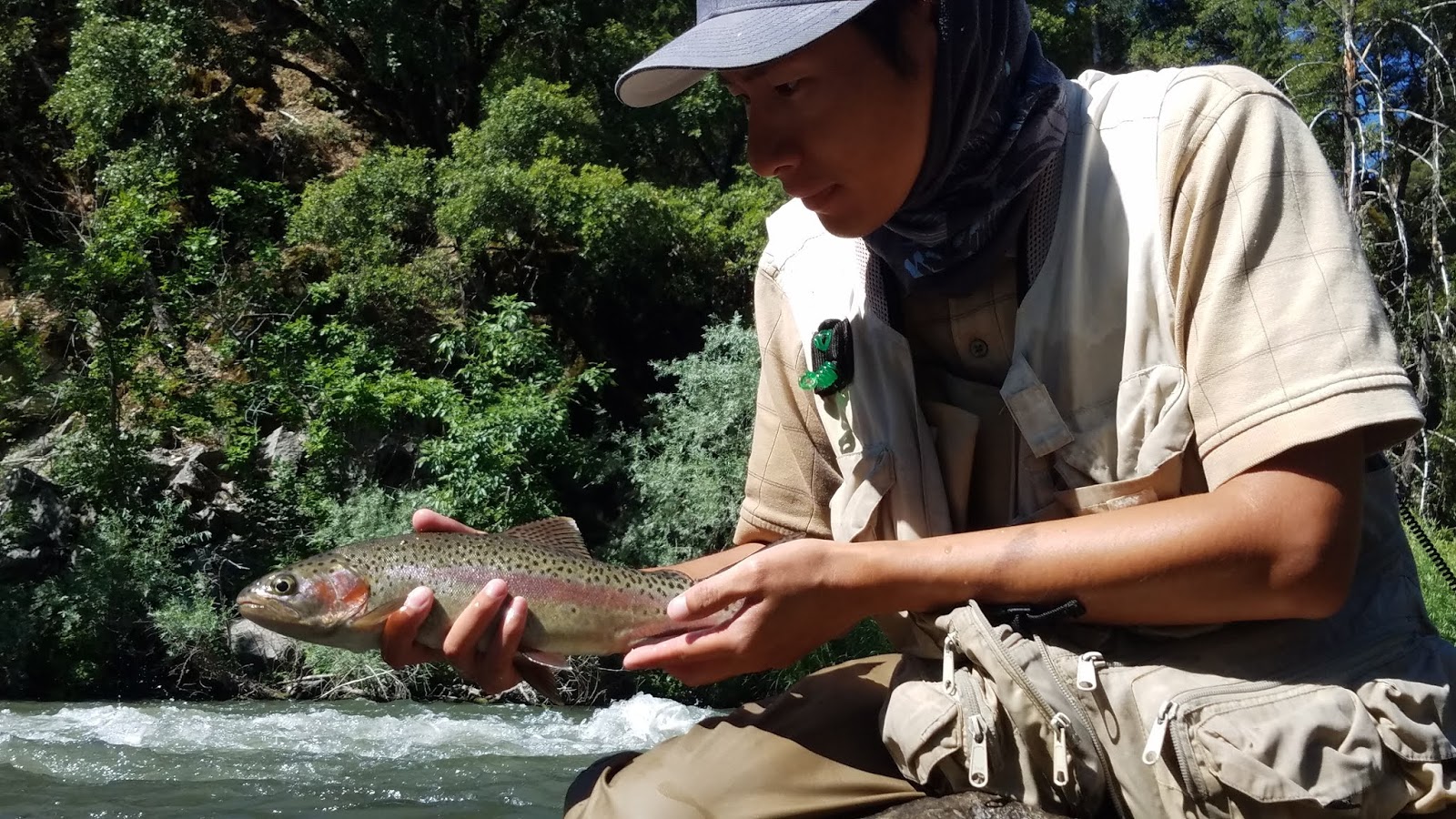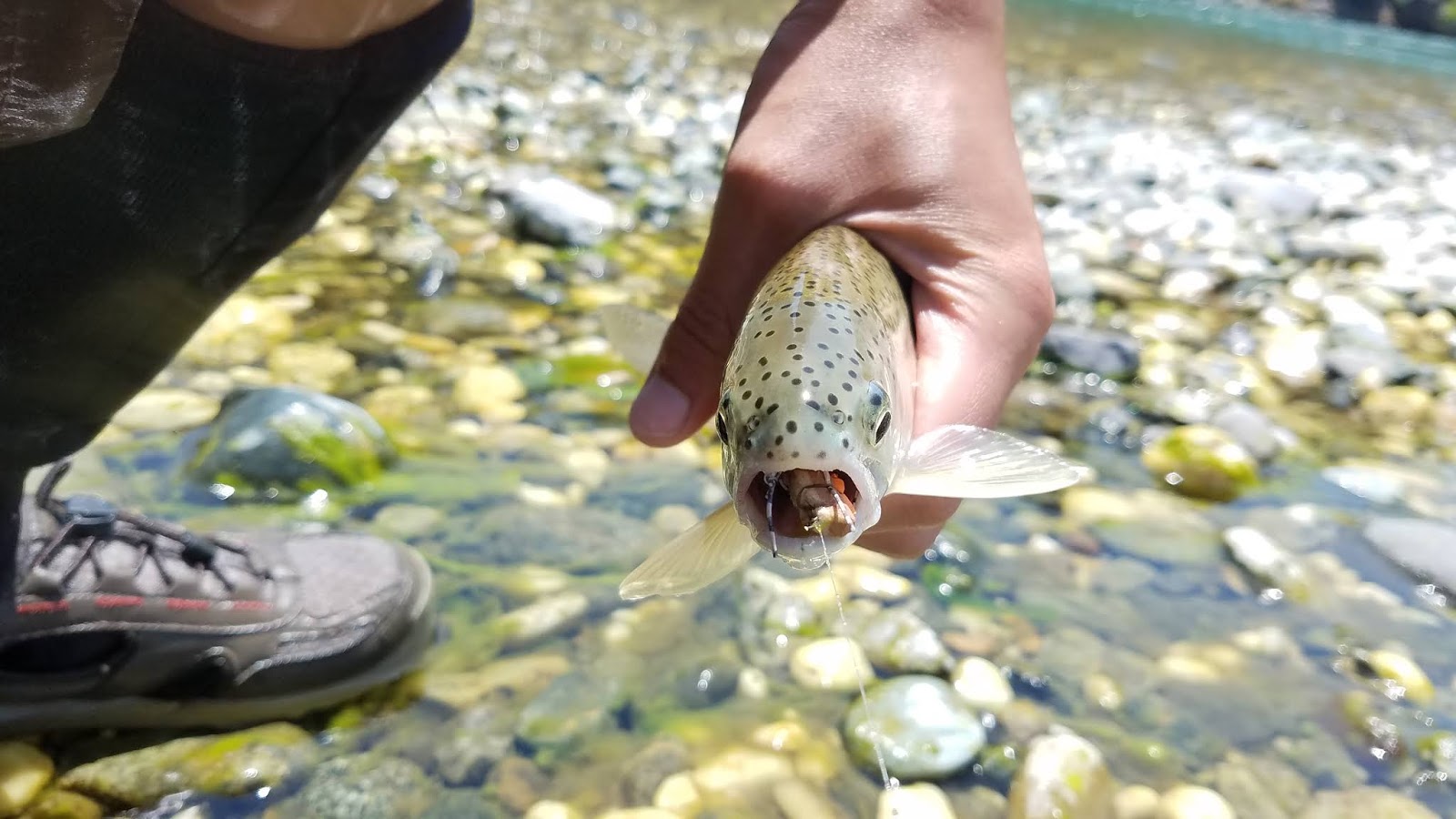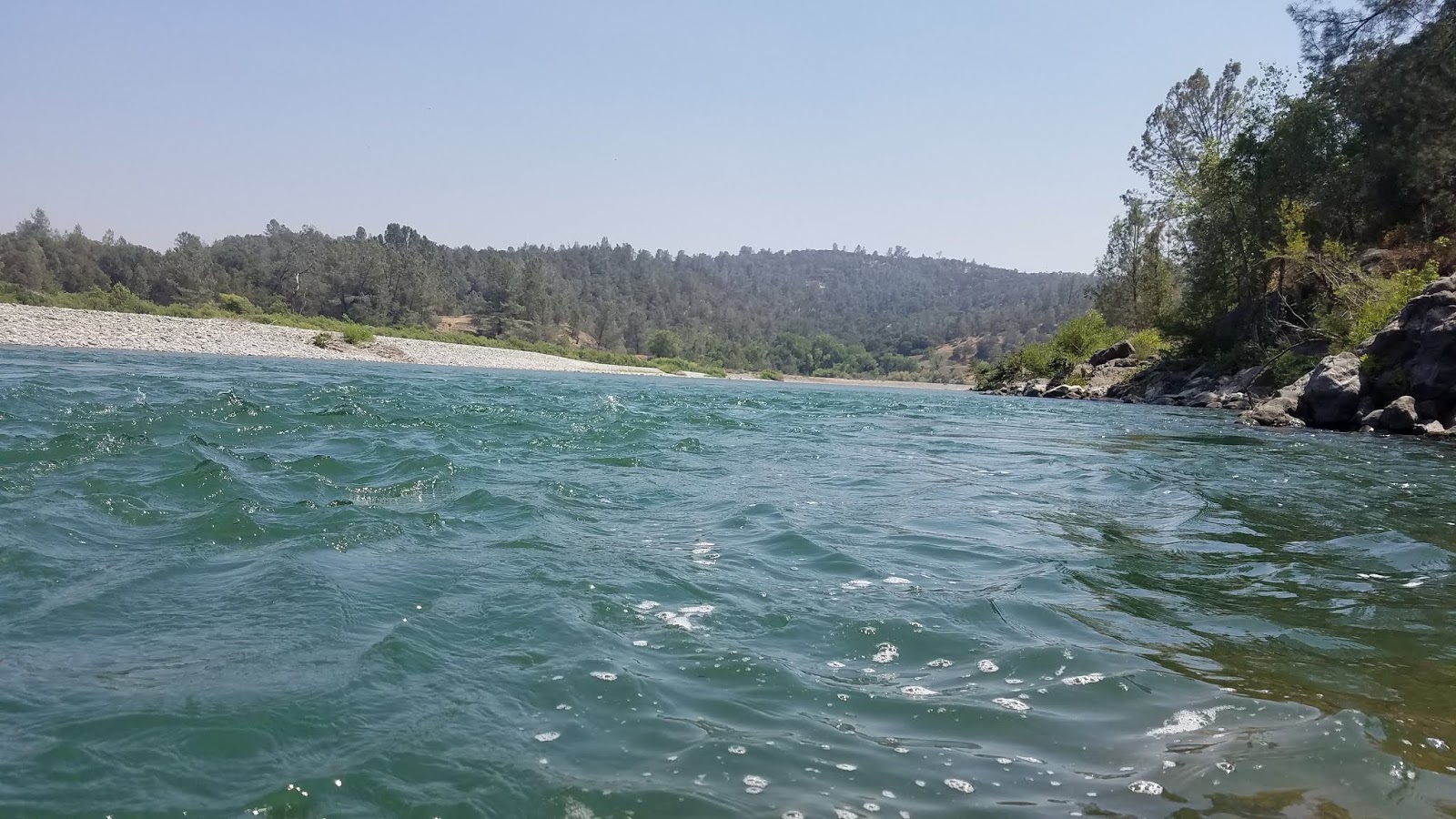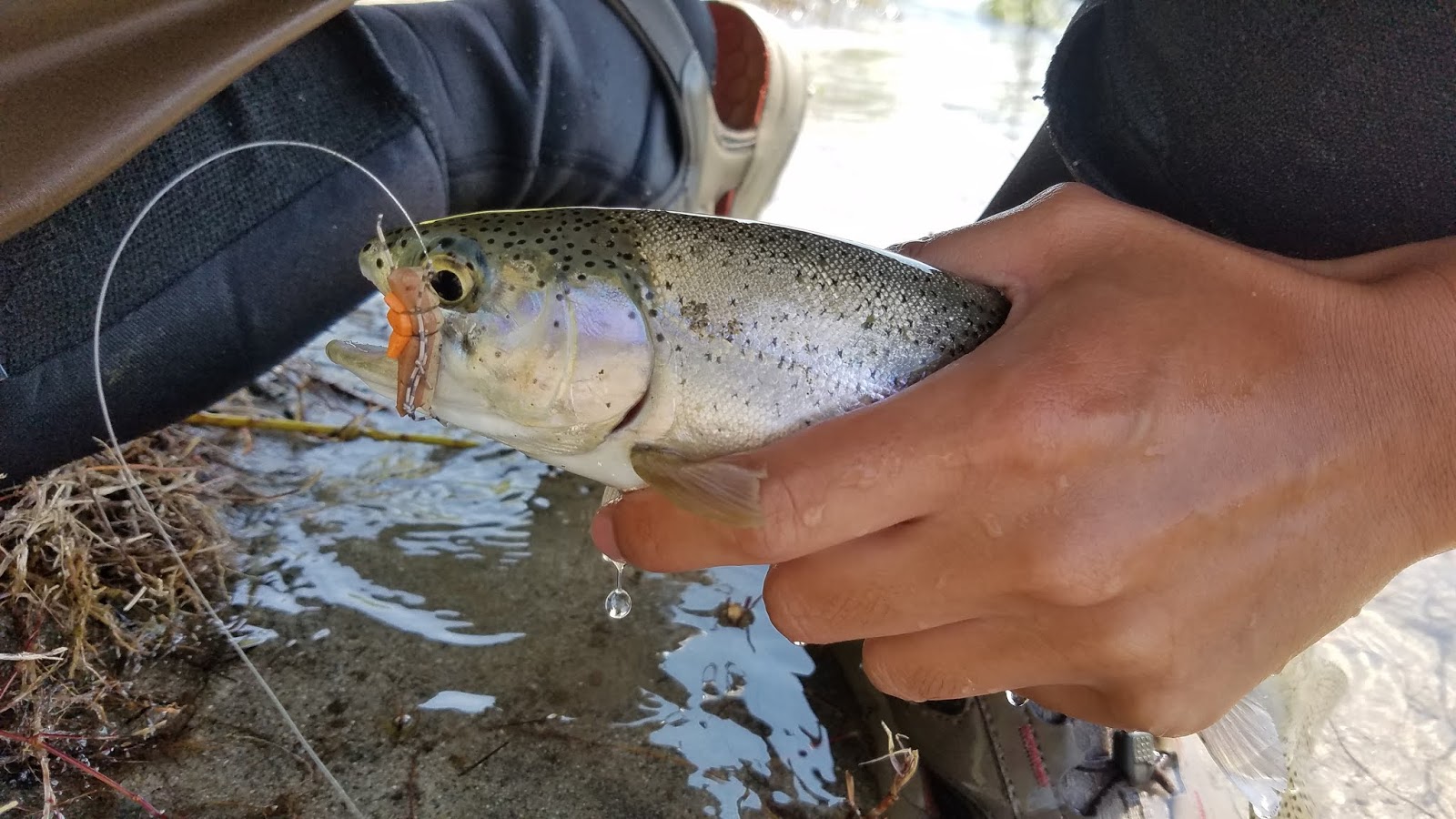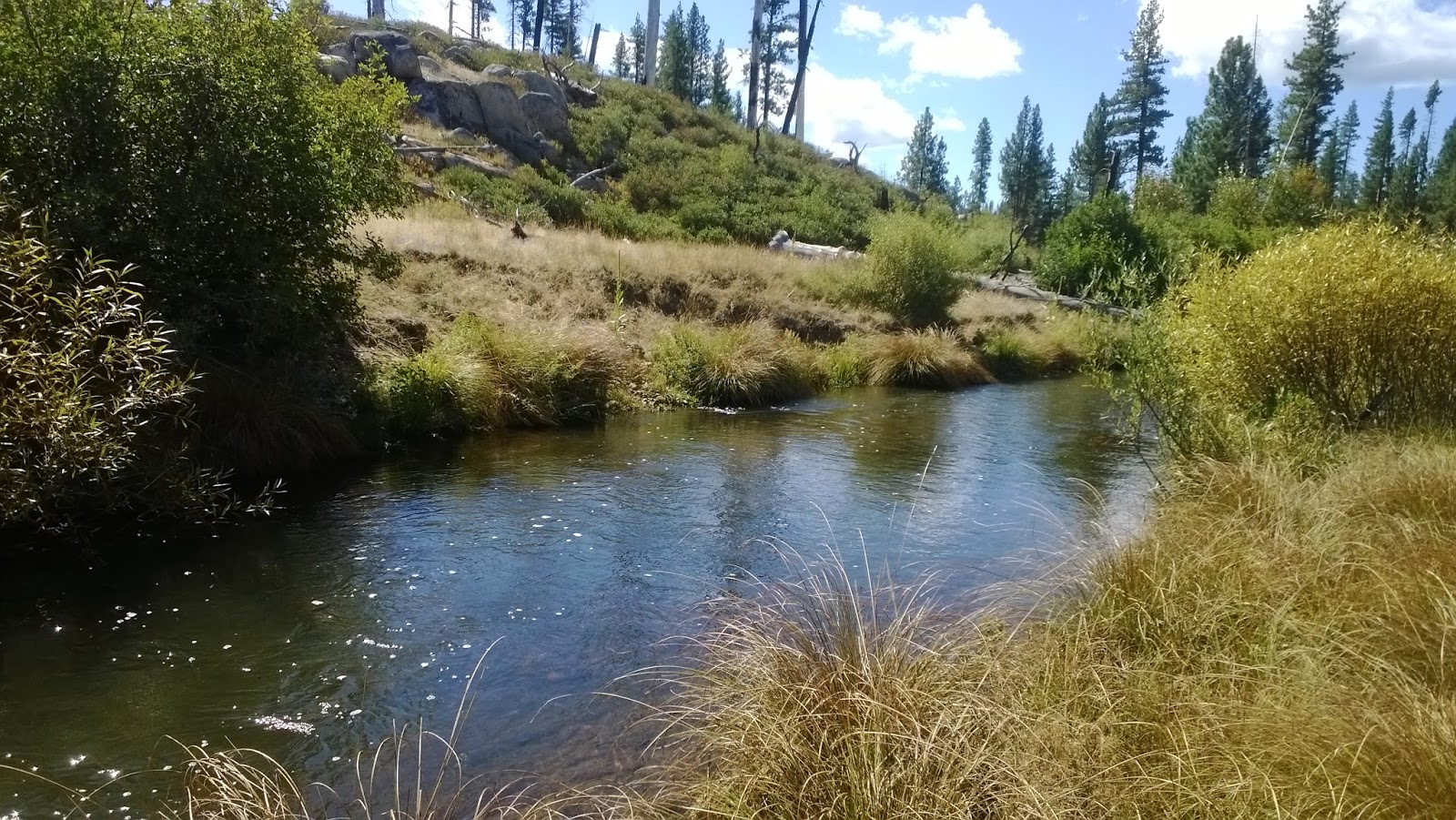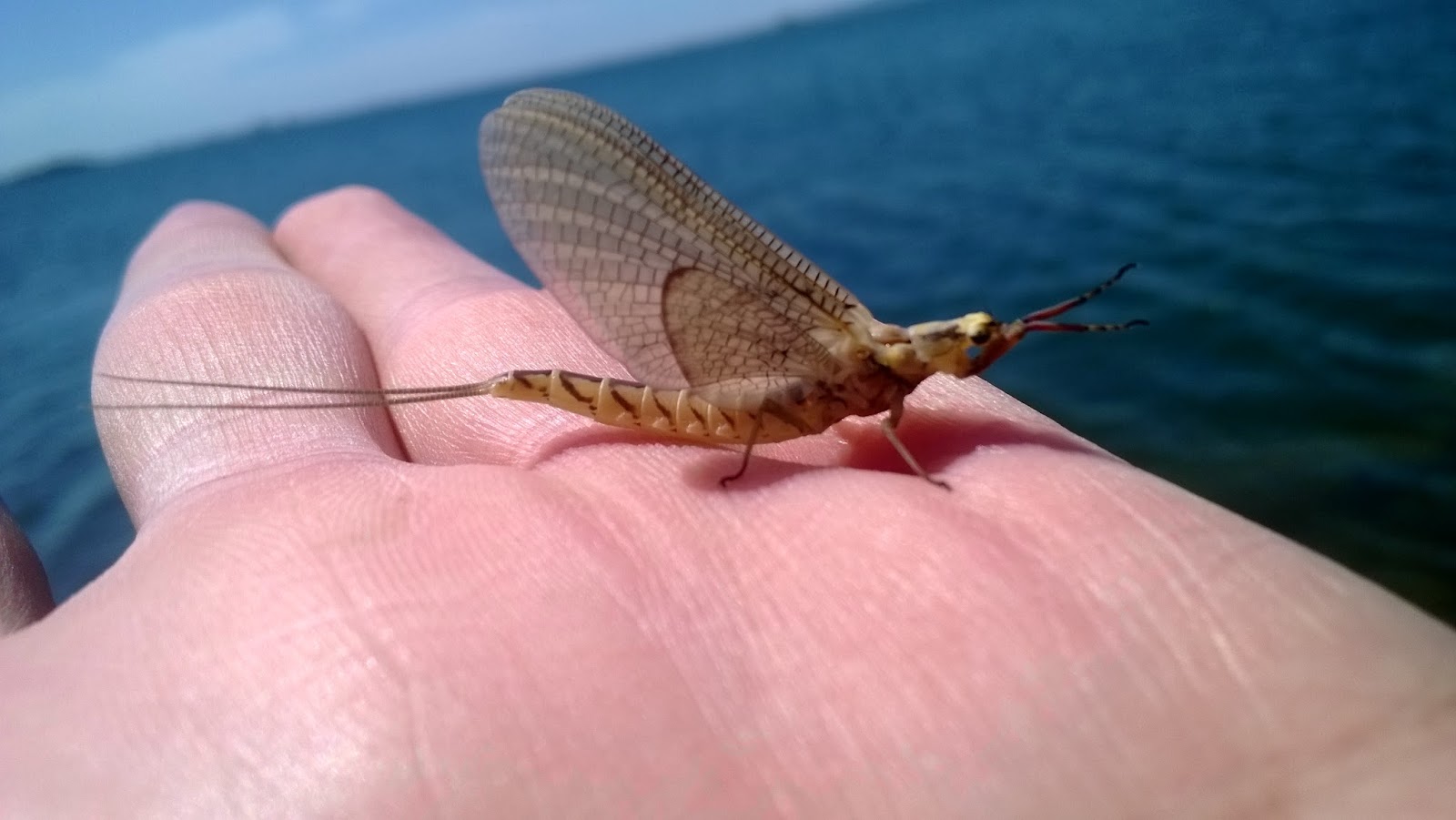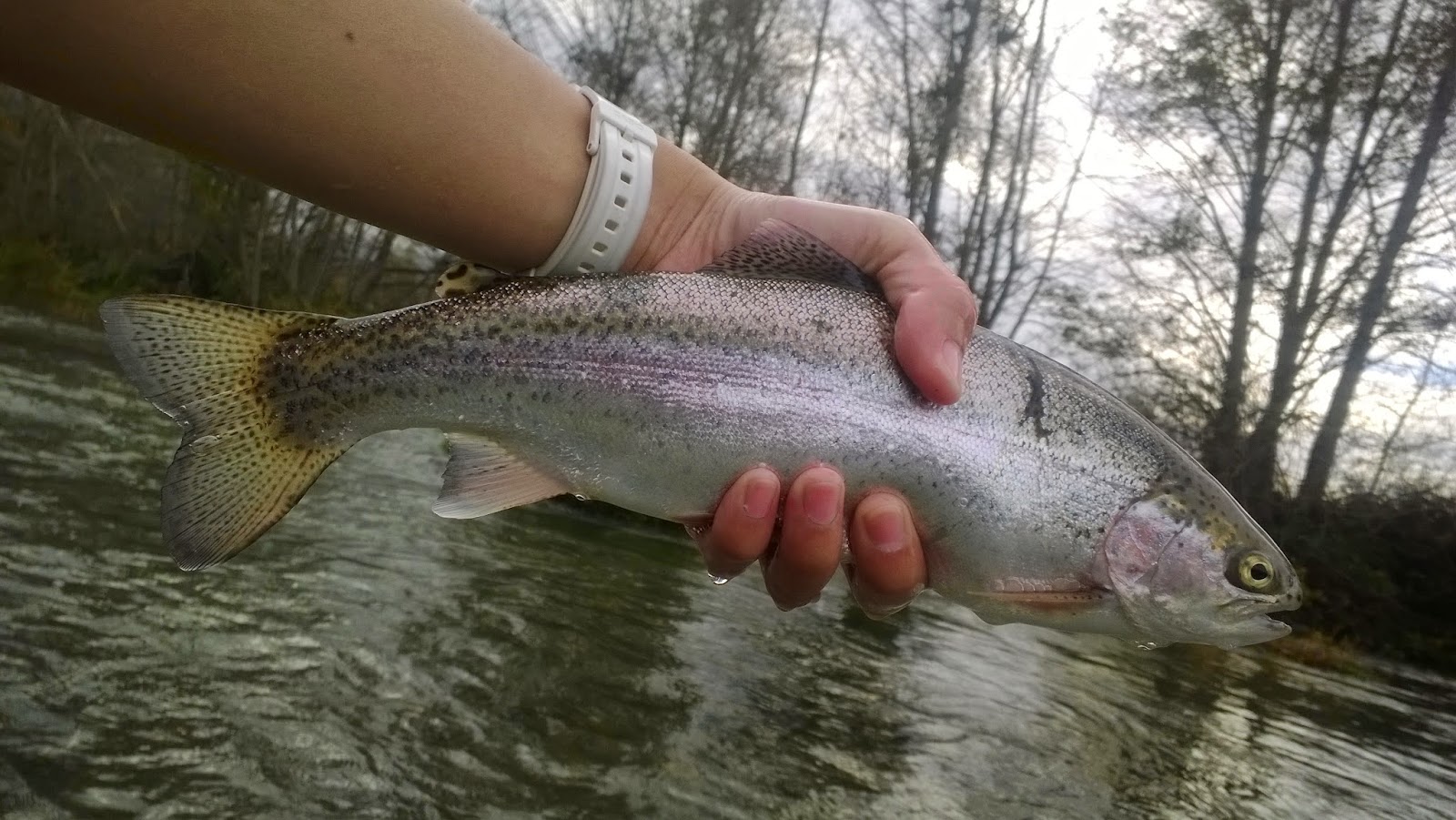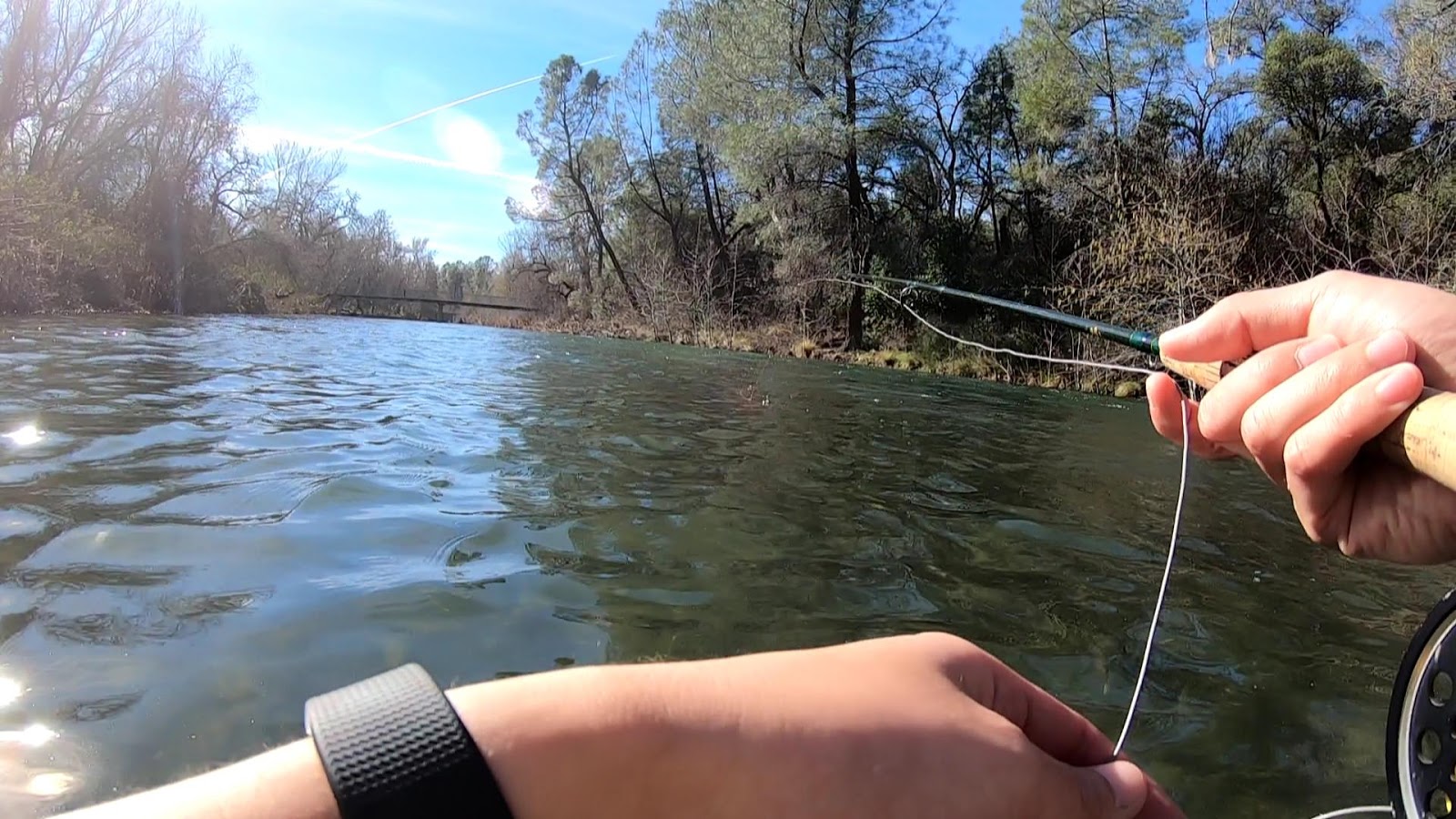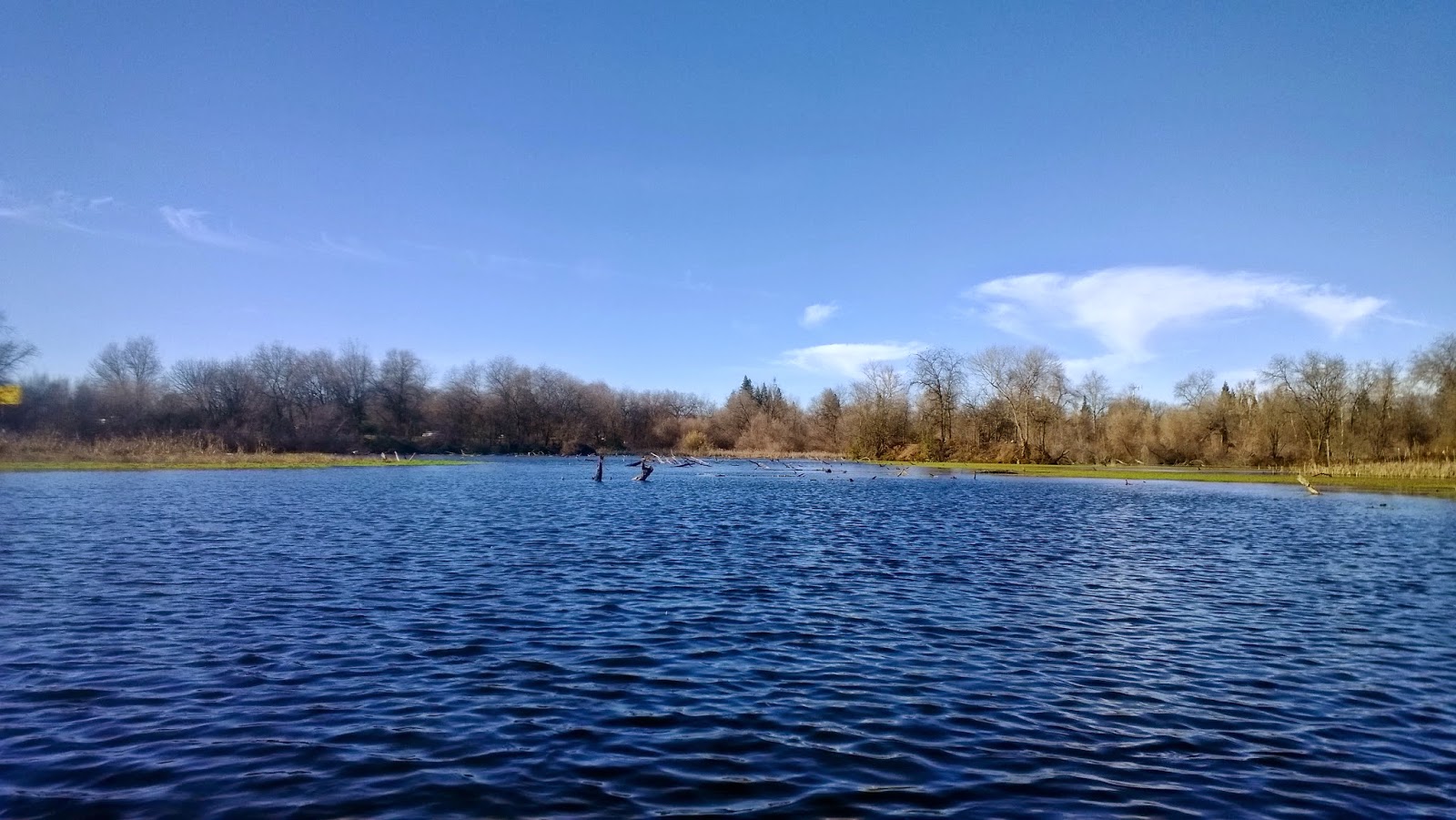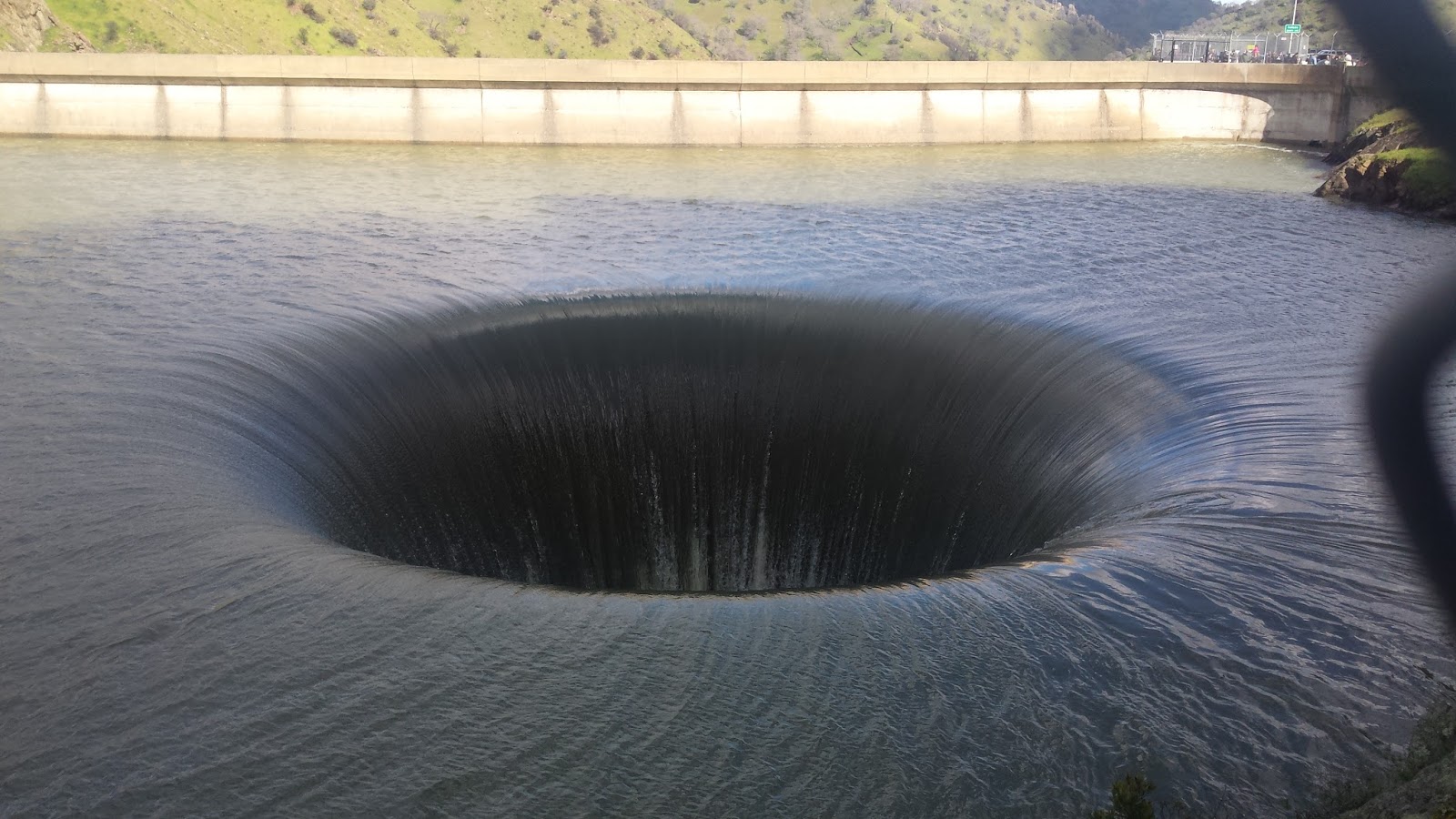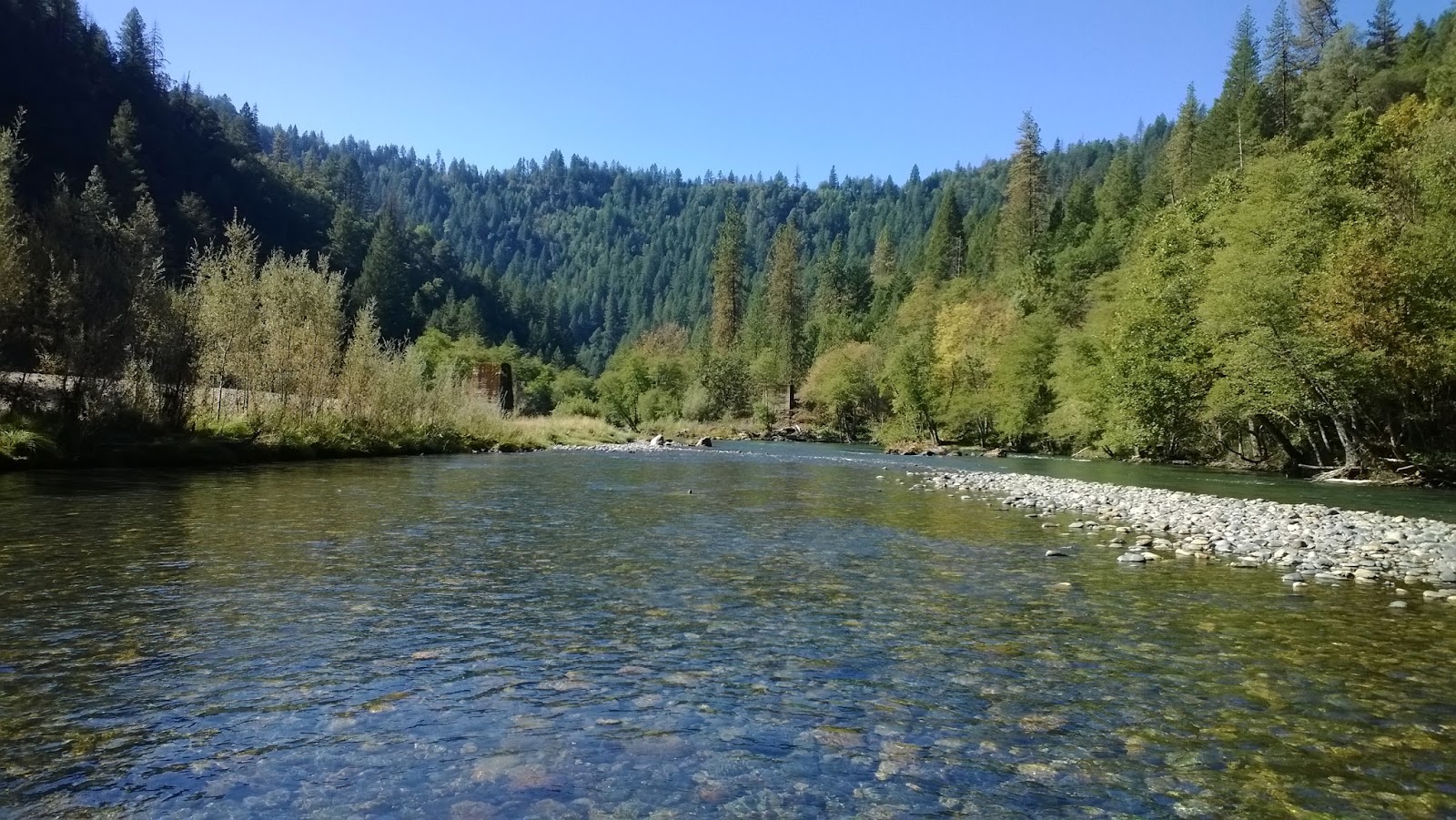The Pit River has some of the best nymphing fishing in California but it is by far the most physically demanding river I’ve ever fished. You can fish an entire section of water and feel like you’ve waded a mile only to find that you’ve moved a couple yards. Boulder hopping, blind wading, bushwhacking, and endless waves of trout define this river.
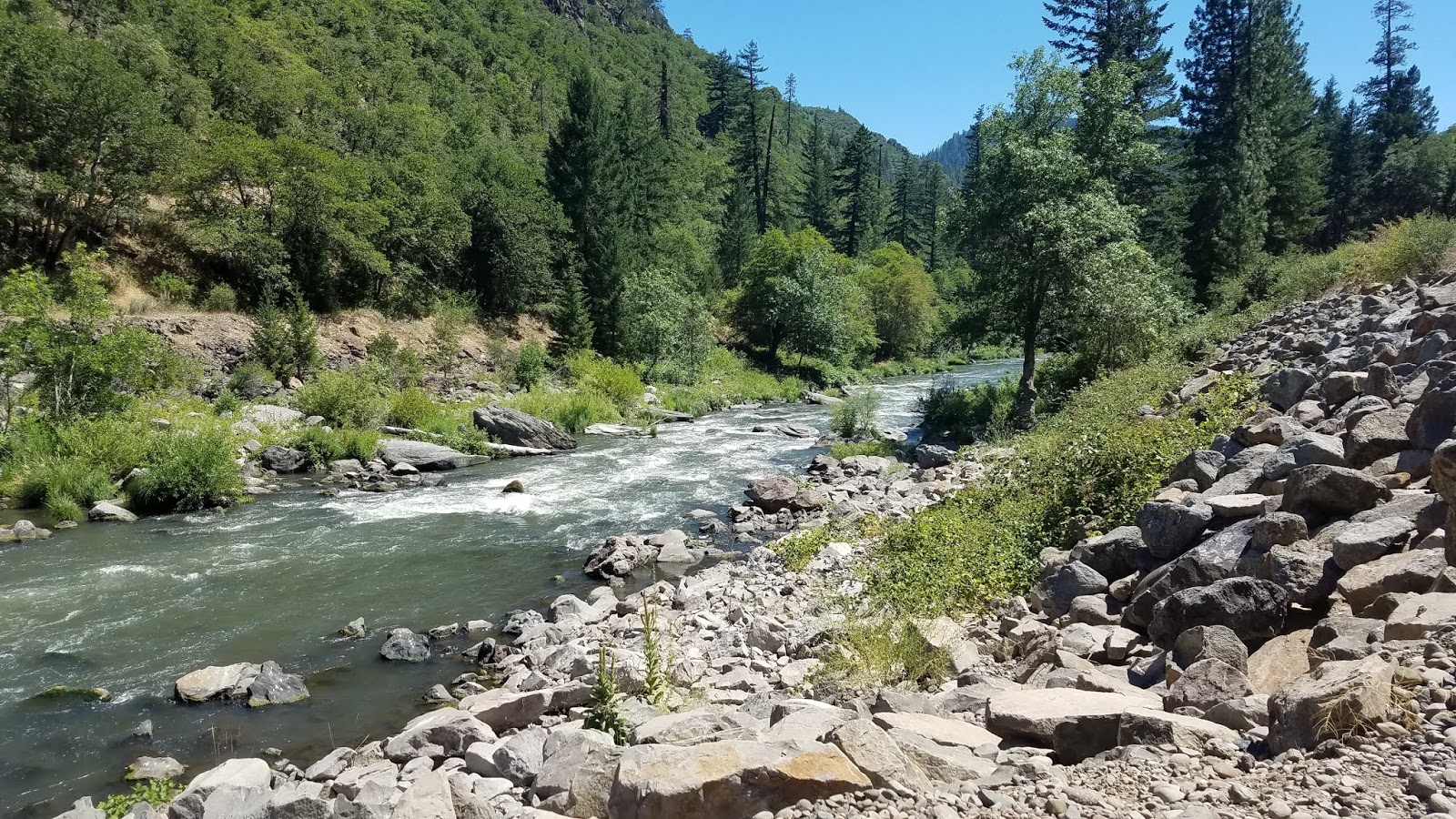 |
| Pit 3 Below Lake Britton Dam |
Unlike many of the spring-fed rivers and creeks in the surrounding area, the Pit is subjected to warmer water temperatures in the summer which can make fishing for trout too risky for resuscitation. Higher-than-average water temperatures were very prevalent during the four year drought however they haven’t been as much as an issue since the El Nino floods and the decent snowpack we’ve been getting recently. One of the signs along the river I read reported that these fish have adapted to high winter flows and low summer flows therefore biologically these fish are quite hardy and resilient.
Pit 3 is where most of the magic happens on the Pit River. The river
there flows below Lake Britton dam which helps keep the water cool. The river flows through a steep canyon for the first few miles below the dam. There are several turnouts and access points however you’re going to have to hike down to get to them. The canyon starts to flatten out a bit once you make your way down to Rock Creek access. You’ll be spending a lot more time getting around instead of fishing so if you’re looking to get into some quick action definitely hit up Rock Creek access or the river below it.
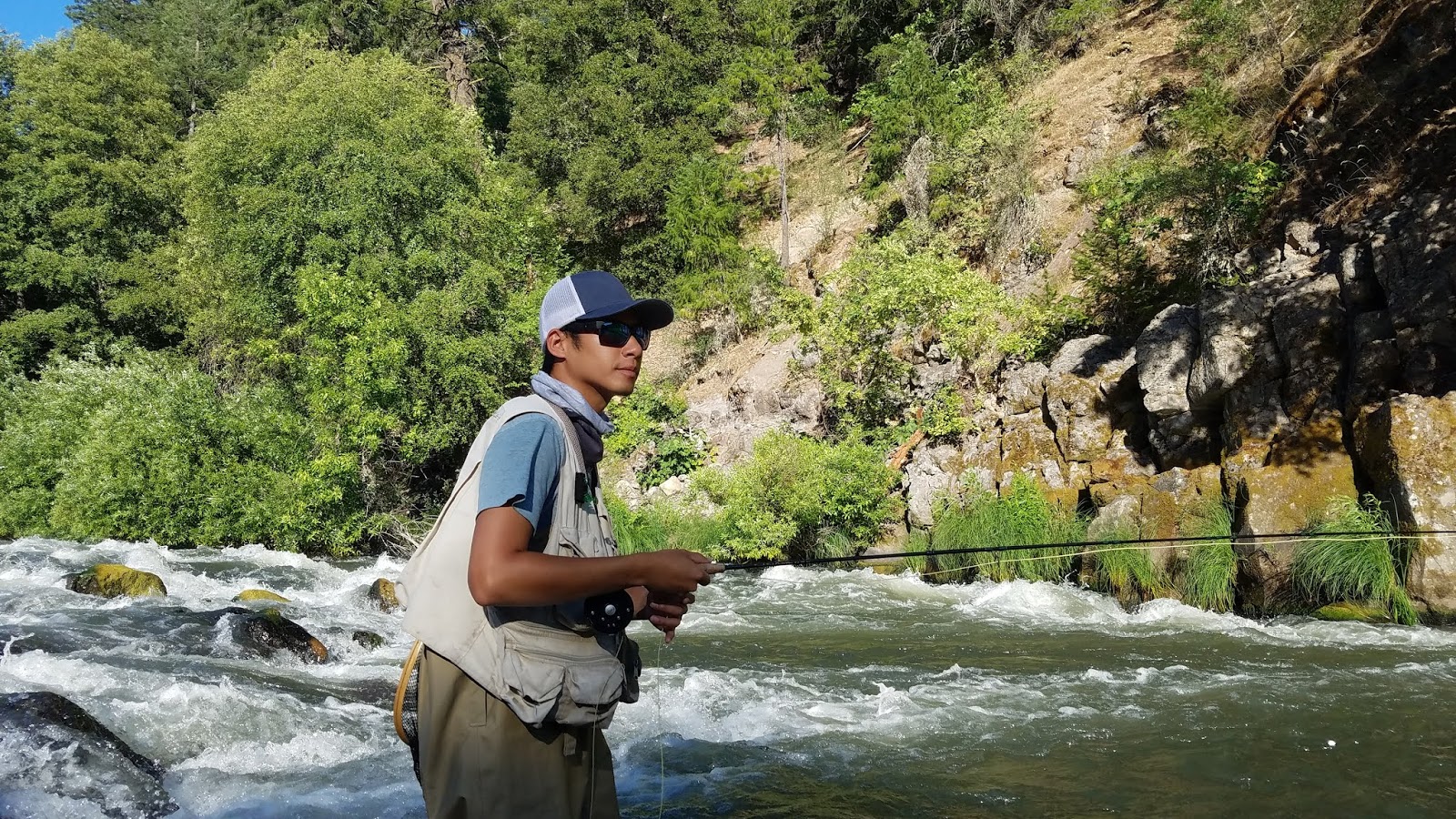 |
| Took Me Like 15mins To Get To This Spot |
My number one advice for anyone who is interested in fishing the Pit is to bring a wading staff. If you don’t bring a wading staff I suggest you bring some extra clothes because you’re going swimming. The Pit is made up of algae covered boulders that are extremely slippery especially the ones that are at an angle or rounded, I don’t recommend putting your foot on those. The river isn’t deep or swift per se it just has a lot of deep holes in it.
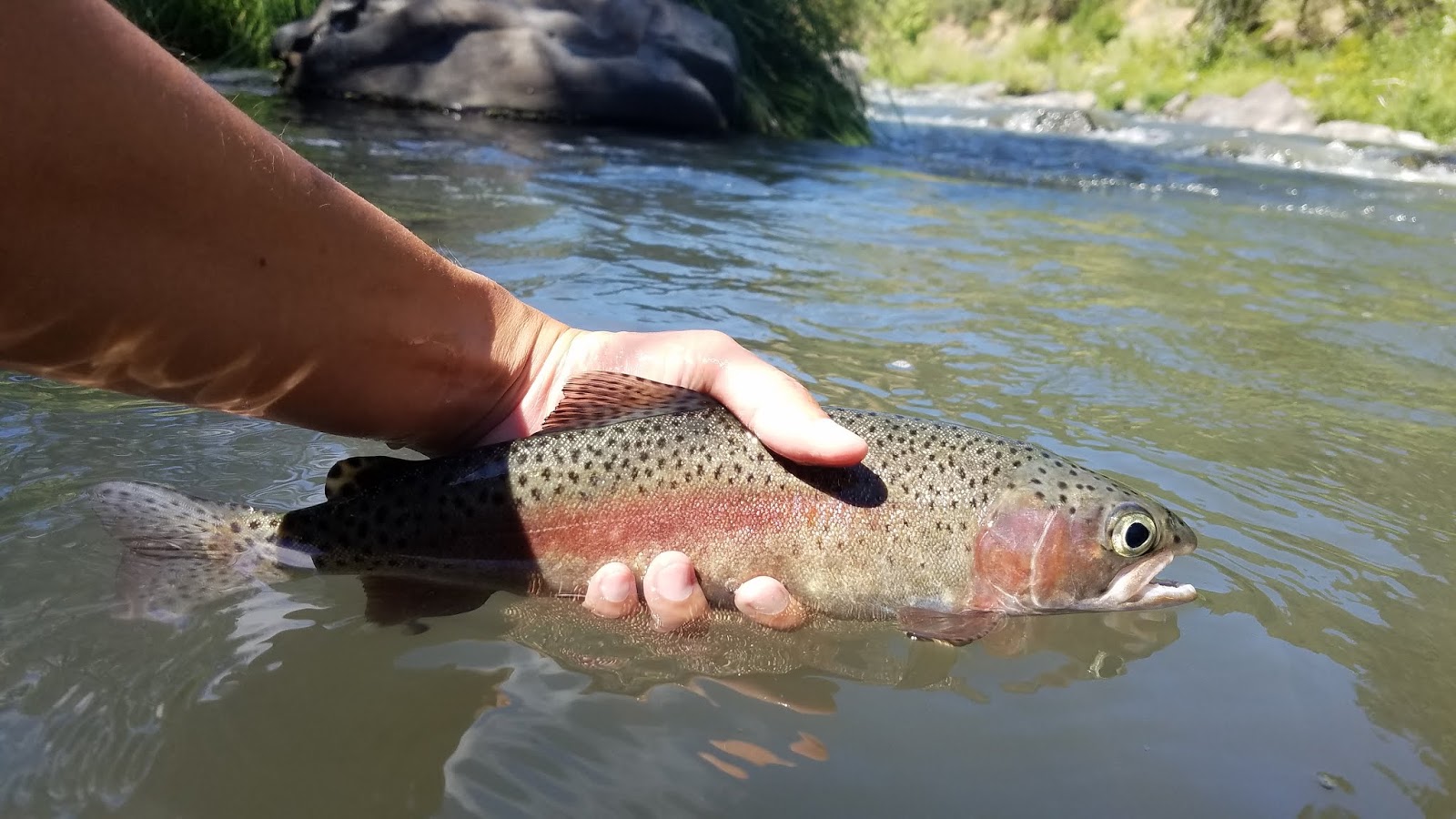 |
| Pit River Shasta Bow |
Fishing wise this trip was quality over quantity. I hooked more than I landed and didn’t net anything less than 12”. You definitely have to think about how you’re going to land these fish before hooking them because you’re not going to do well trying to fight them in heavy water. These fish appeared to tire fast after a few short bursts and I was able to land most of them by bringing them to the surface while netting them as if I was catching a baseball.
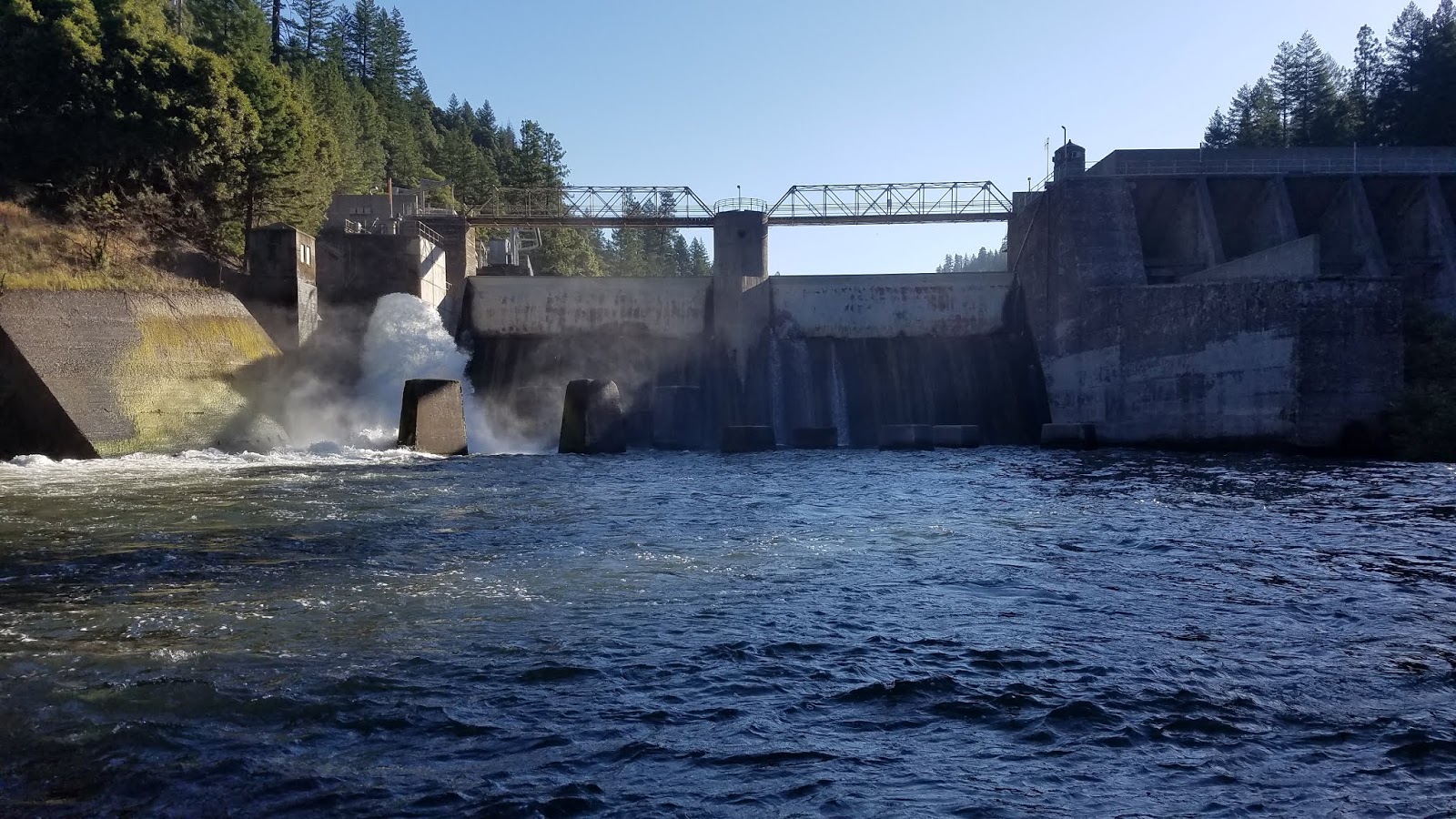 |
| Pit 4 Dam |
I did an overnight at Ruling Creek Campground and fished Pit 4 the following morning. I did pretty well while fishing near the campground but noticed that the water was a bit warmer than it was on Pit 3. Not wanting to exhaust any fish to death, I went back to fish Pit 3 for a bit and ended my trip on Hat Creek.
Hat Creek
I continue to keep coming back to Hat Creek despite the hit-and-miss factor if it. Perhaps I truly do enjoy the challenge of this very technical creek. The majority of the day was spent sight-fishing with a hopper dropper. I rose and missed a few fish on the hopper but got several good grabs on the dropper. Later after the sun went down the fish began rising to PMDs then they switched to some sort of emerger or cripple that I couldn’t figure out. The fish on Hat Creek aren’t huge but they are some of the spookiest and smartest trout I’ve ever fished for. Getting a wild Hat Creek trout to eat your fly whether a dry or a nymph is so rewarding.
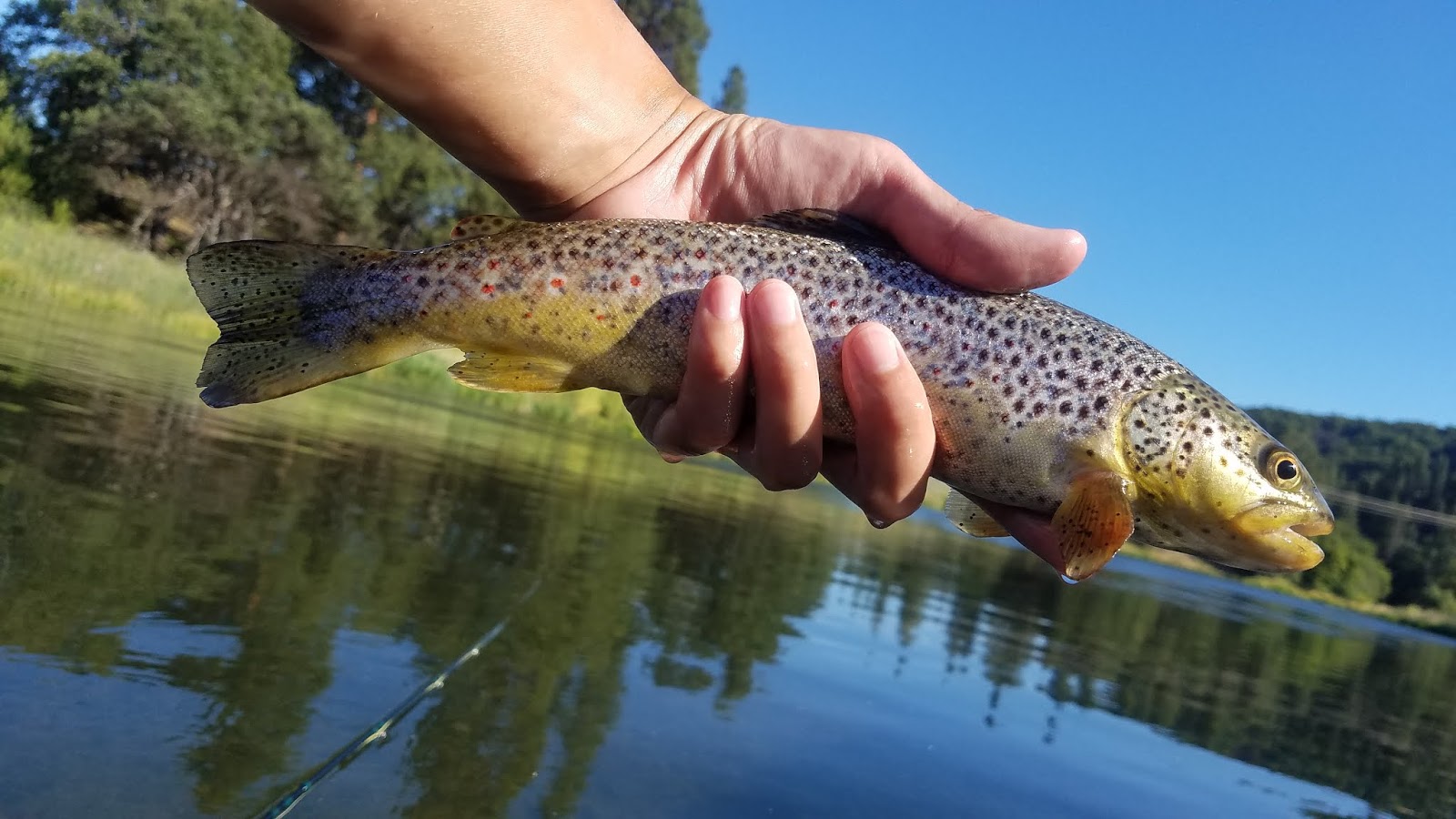 |
| My First Hat Creek Brown |
